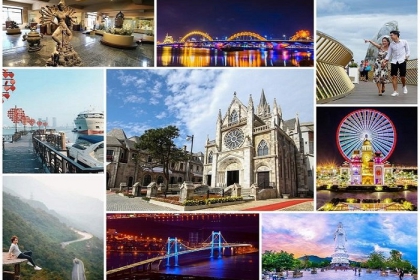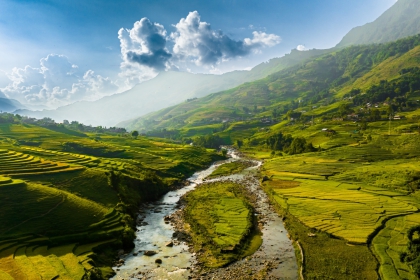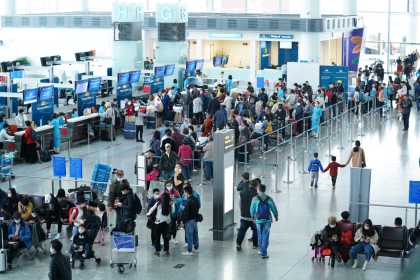Vietnam is a country with rich human resources to develop cultural tourism
Combining the development of tourism with the protection of cultural heritage values has always been a proposition determined by our party and the country. As early as in the "Vietnam Cultural Industry Development Strategy to 2020, Vision 2030", cultural tourism was identified as one of the cultural industries that requires concentrated investment and development.
With a long cultural history and a rich system of tangible and intangible cultural heritage, including thousands of items rated as cultural heritage, Vietnam is a country with rich human resources to develop cultural tourism. This is not only the direction of developing and developing tourism and culture to achieve harmonious and sustainable development, but also the "key" to create unique, distinctive and attractive tourism products.
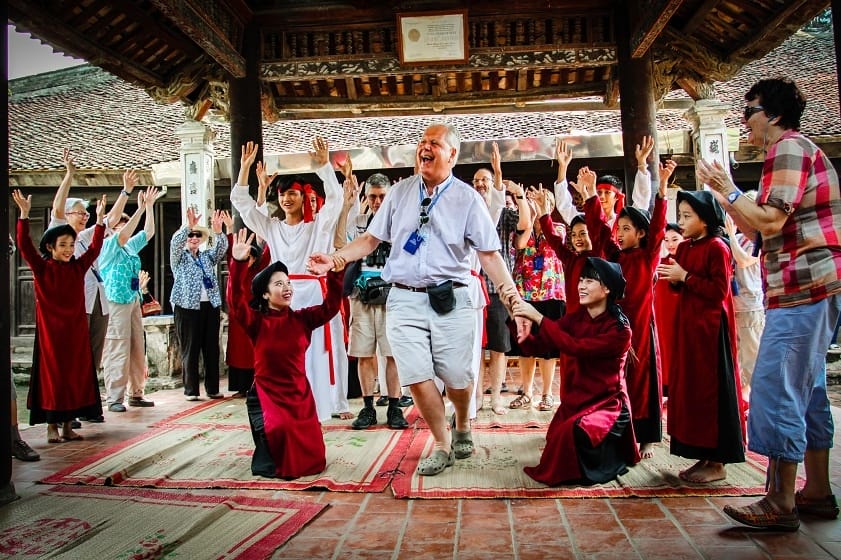
In recent years, Vietnam has been continuously rated as the world's best heritage destination, Asia's best cultural destination, Asia's best food destination, etc. by the World Travel Awards (WTA). Many cultural tourism products and world cultural heritage destinations have become Vietnam's tourism map. Important highlights on the list, such as: Trang An Scenic Area in Ninh Binh Province, Hue Ancient Capital Ruins in Thua Thien-Hue Province, My Son Ruins in Quang Nam Province and Hoi An Ancient Town, etc. This proves the attractiveness of Vietnam’s cultural tourism to domestic and foreign tourists.
Recently, in order to diversify travel itineraries and create a unique brand, many characteristic cultural tourism products have been jointly developed by travel agencies and destinations, attracting positive responses from many tourists, such as exploring Thang Long Imperial City and the "Heart Character Cai Zi" Literature Museum Tours, "French Architecture in Hanoi" tour, "Elite of the North", "Hoi An Memory" art performances, etc.
However, experts say that overall, Vietnam still does not have many high-quality cultural tourism products commensurate with its potential. Dr. Nguyen Anh Tuan, President of the Institute of Tourism Development, believes that Vietnam’s cultural tourism products are repetitive, less creative, and of limited quality, and there is a lack of differentiated products among many places and regions in the country.
In addition, in the process of developing cultural resources to develop tourism, there is a lack of product synchronization, linkage, and connectivity between places. Therefore, sustainable high-quality cultural tourism products have not yet been created. This situation requires finding solutions to increase the creative content of cultural tourism product development and construction.
Le Thi Thu Trang, manager of the Destination Management Department of SGO DMC, a travel company, said that currently, tourists have increasingly higher requirements for the content of travel, not just the beautiful scenery of the destination.
She stressed that Vietnam has rich cultural materials all over the country. A national special heritage, a world cultural celebrity, a folk song, a traditional festival, a handicraft village, a street, a bamboo hat, etc., all contain stories. The task of cultural tourism workers is to tell stories related to destinations and connect the many stories of each destination to bring or create authentic experiences for tourists during their journeys.
Wu Wenxuan, general manager of Travelogy, said that in fact, there are many ways to increase creativity in building and promoting cultural tourism products, but there are three main ways: reproduction, simulation and narration. These three forms all aim to create more impressions and deep feelings for tourists, and enrich the experience of tourism products in a reasonable way through images, models, stories, real or fictional historical and cultural legends.
Many countries around the world, such as China, Singapore, Thailand and Malaysia, have quite successfully invested financial resources and technology in applying the above three methods to build and promote cultural tourism products related to traditional handicraft villages, cultural and historical museums, food, etc.
Mr. Wu Wenxuan said that a cultural tourism product needs to be distinctive, stable and open. The uniqueness of the product can attract the interest of the target market. Stability is reflected in the product cycle and service frequency.
Without stability, efforts and investment resources in tourism development activities will be wasted. Openness is reflected in the ability of the product to be adjusted according to specific situations and needs. The general manager of Travelogy also pointed out that travel products are rarely developed individually, but are usually aggregated and interconnected to form tourist attractions and routes to meet the diverse needs of tourists.
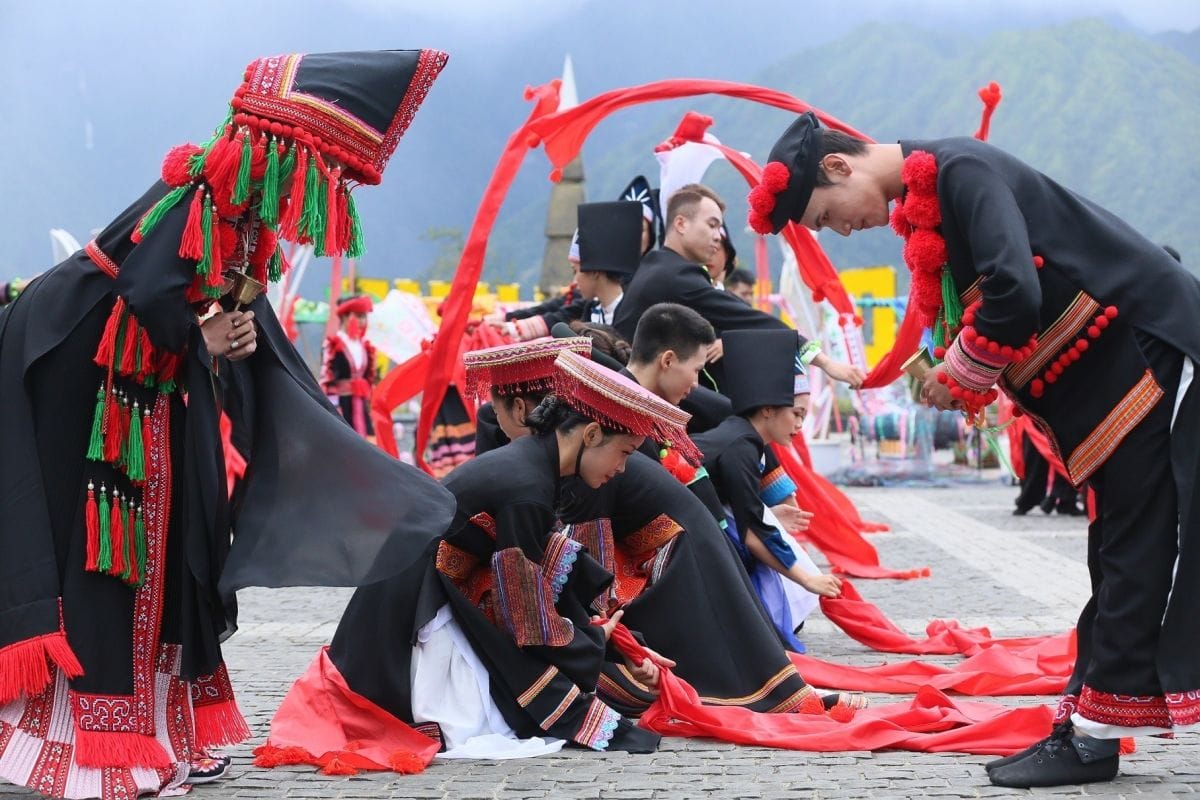
Therefore, in the planning and organization of tourism development stages, it is necessary to consider the connection capabilities between products and tourist routes and attractions. In addition, in order to effectively develop customer sources, it is necessary to contact and cooperate with travel agencies or major customers. These partners are not only the intermediaries that connect products and bring them to tourists, but also present actual needs through their business processes, allowing managers to make adjustments to further improve the product development process.
In this way, to develop and operate a high-quality tourism product requires the participation of not only the destination and local governments, but also cultural and historical experts and tourism practitioners.
From a macro perspective, Dr. Nguyen Anh Tuan, president of the Institute of Tourism Development, believes that to develop cultural tourism, special attention needs to be paid to the protection and restoration of cultural heritage in order to maximize its value. Shape and establish the brand of each place and country based on the existing cultural foundation to attract the attention of domestic and foreign investors and tourists. Focus on investing in developing and improving tourism infrastructure and technical facilities, especially in places with rich cultural tourism resources but slow economic and social development. Give full play to the role of communities and community culture in tourism development to ensure that tourism development activities have a harmonious effect on the interests of society.


